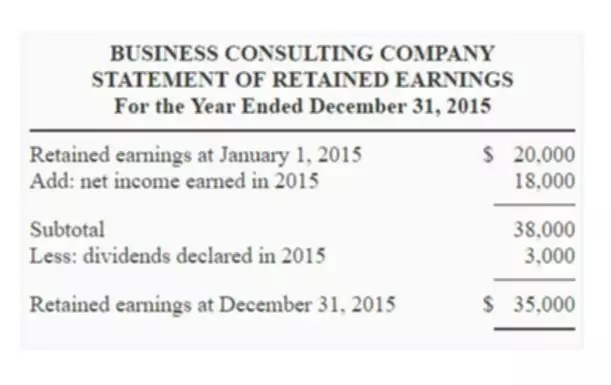Going concern: recommendations to strengthen the financial reporting ecosystem
Top Node js Jobs
September 21, 2021QA-инженер: кто это и чем он занимается Медиа Нетологии
November 18, 2021Content
- Journal of Contemporary Accounting & Economics
- Accounting Manager CPA
- Are contingent convertibles going-concern capital?
- Testing goodness of fit for the regression model
- What Happens If a Company Is Not a Going Concern?
- The effect of audit lag on the going concern audit opinion
- The effect of profitability on the going concern audit opinion
- Announcement effects of contingent convertible securities: evidence from the global banking industry

Based on the results of the logistic regression analysis to determine influencing factors on the https://www.bookstime.com/ audit opinion with research data of manufacturing firms listed on the IDX from 2015 to 2019, it can be concluded that leverage was positively affected the going concern audit opinion. This indicates that companies with high debt ratio are very likely to suffer financial and continuity difficulties. Audit quality, profitability and liquidity negatively affected the going concern audit opinion, while firm size and audit lag did not affect the going concern audit opinion. Leverage can be an indicator that determines the company’s ability to meet both short- and long-term financial obligations.
These results show that going concern reporting accuracy and auditor conservatism are constant between the pre-GFC period and the post-GFC period. The type II misclassification of going concern reports during the GFC and in the post-GFC periods is not significantly different from the type II misclassification in the pre-GFC period, which is different from the lower type II misclassification after the GFC reported by Geiger et al. (2014). A possible explanation for different results is that this study includes more control variables in the model and uses the different techniques1 to analyze the effects of GFC and POSTGFC on GC.
Journal of Contemporary Accounting & Economics
Hence, a declaration of going concern means that the business has neither the intention nor the need to liquidate or to materially curtail the scale of its operations. If a company is not a going concern, that means there is risk the company may not survive the next 12 months. Management is required to disclose this fact and must provide the reasons why they may not be a going concern.

Section II presents a model that predicts how stock return volatility and the difference between CoCo and subordinated debt yields are affected by a CoCo’s likelihood of absorbing losses while its bank is a going-concern. Section III provides empirical evidence on the relationship between CoCo issuance and changes in stock return volatility while Section IV contains event study evidence of recent regulatory actions’ effects on CoCos’ going-concern loss absorption. As far as we are aware, our paper is unique in testing whether CoCos are perceived as going-concern capital by analyzing the annual volatility of a bank’s stock returns before versus after its issuance of a CoCo.
Accounting Manager CPA
A current definition of the going concern assumption can be found in the AICPA Statement on Auditing Standards No.1 Codification of Auditing Standards and Procedures, Section 341, “The Auditor’s Consideration of an Entity’s Ability to Continue as a Going Concern” (AU Section 341). The “going concern” concept assumes that the business will remain in existence long enough for all the assets of the business to be fully utilized. There are also a number of quantifiable, measurable indicators that auditors use to measure going concern. Companies with low liquidity ratios, high employee turnover, or decreasing market share are more likely to not be a going concern.
This will include a business valuation to attempt to value the company as a going concern and to value the assets at liquidation value. Going concern is a determination that a company has sufficient assets and revenue to continue operating for the foreseeable future. Once a business goes bankrupt or otherwise liquidates, it is no longer considered a going concern.
Are contingent convertibles going-concern capital?
By making this assumption, the accountant is justified in deferring the recognition of certain expenses until a later period, when the entity will presumably still be in business and using its assets in the most effective manner possible. The descriptive statistics in Table 2 indicated that the average of companies received going concern audit opinion were 0.25 or 25%, and the rest were received non-going concern audit opinion by auditors. Going concern audit opinion was measured by using dummy variable, the minimum of 0 and maximum of 1 means there are companies that received going concern audit opinion clean opinion coded with 1 and companies that received non-going concern audit opinion coded with 0. The descriptive statistics in Table 2 indicated that the time needed by PAFs to complete the audit report from the end date of financial statements was, on average, 93.03 days, the minimum duration was 53 days and maximum duration was 209 days, with the deviation standard of 27.73. CAS 570 has been revised and reissued as a result of the issue of the new auditor reporting standards, including the issue of CAS 701, Communicating Key Audit Matters in the Independent Auditor’s Report.
What is the synonymous term of going concern?
Synonyms of going concern (adj.
advantageous. beneficial. fat. fruitful. generous.
CFI is the official provider of the Financial Modeling and Valuation Analyst (FMVA)™ certification program, designed to transform anyone into a world-class financial analyst. Without any significant information to the contrary, it is always assumed that the entity will be able to meet all its obligation without significant debt restructuring and continue to be a going concern entity. This influences which products we write about and where and how the product appears on a page.
Testing goodness of fit for the regression model
This can protect investors from continuing to risk their money on a business that may not be viable for much longer. It is the responsibility of the business owner or leadership team to determine whether the business is able to continue in the foreseeable future. If it’s determined that the business is stable, financial statements are prepared using the going concern basis of accounting.
- It is the responsibility of the business owner or leadership team to determine whether the business is able to continue in the foreseeable future.
- If a company is not a going concern, that means there is risk the company may not survive the next 12 months.
- Company size can be assessed using several proxies, namely, asset, sales and market capitalization.
- Most troubling is that auditors might fail to issue a negative going concern opinion because of the lack of auditor independence.
- The presumption of going concern for the business implies the basic declaration of intention to keep operating its activities at least for the next year, which is a basic assumption for preparing financial statements that comprehend the conceptual framework of the IFRS.
- The time needed to complete an audit on a company’s financial statement cannot be used as an indicator to estimate whether the company has a poor ability to maintain its business continuity.
